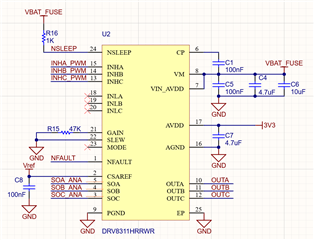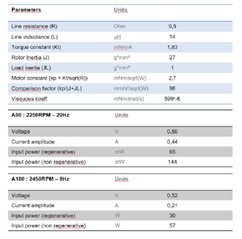Other Parts Discussed in Thread: DRV8305-Q1EVM
Hi,
We are using the following chip DRV8311HRRWR to drive a custom-made motor. The problem we have is that the motor driver is heating quite a lot.
The total current of the board is about 147mA:
- Idle current: 23mA
- Driver + motor: 124mA
After a few measurements, we saw that about 50% of the driver + motor current is dissipated into the driver chip, more or less 60mA. This causes the driver to heat up and reduces the efficiency of the application. This is a significant issue, especially since it's a battery application.
- We have already tried different dead-time settings.
- We have analyzed if the PWM input is correct.
- We tried to play with different PWM speeds (40kHz and 80kHz).
- We checked if the phases are 120 degrees apart from each other.
The layout could be improved in terms of heat dissipation. There are no thermal pads under the exposed pad. This will be changed in the next iteration.
Do you maybe have any clue why the chip is heating so much?
If you need more information, please let me know.





